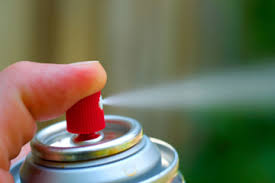Articles » How do I? » How To Get Best Results From Aerosol Spray Paint
General Aerosol Spraying Tips
SURFACE PREPARATION:
Surfaces to be painted should be clean, dry and free of oil, grease, rust, wax, loose paint and other contaminates.
Extremely slick, glossy or previously painted surfaces should be lightly sanded to provide better paint adhesion. Aerosol paints tend to be based on strong solvents, so consider compatibility with items to be painted. Some surfaces may require a primer, so check that also.
Areas with exposed rust should be scraped clean with a scraper or wire brush and treated with a good rust inhibitor, that penetrates the pores and cavities and gets in to the steel behind rather than just sit on top which tend to be not so effective. The one we recommend is Owatrol CIP, (on this site) because it accepts all paint types without a reaction due to incompatibility.
Always apply a good-quality primer before painting over wood, bare metal or when changing the colour dramatically.
Cover adjacent areas to protect them from overspray. You can use old sheets on the floor or over furniture etc. There are many different varieties of masking products available now that will make life very easy on the preparation side. Masking tape is available in several widths usually 1, 1.1/2 and 2". Another very useful product are the rolls of brown masking paper with the masking tape already stuck on one end overlapping so that you can attach the pre-taped paper directly to where you want it. Usually it is available in 2, 6, 9 and 15" widths. You can also obtain rolls of pre-taped plastic masking material which open out to about 6 feet and are very handy.
Paints should be applied under dry conditions at or near room temperature. Humidity and temperature conditions can have a significant impact on drying times.
APPLICATION: Shake can vigorously for one minute to ensure that the contents are mixed thoroughly. Make sure agitator ball is rattling freely inside the can. Shake occasionally during use.
Hold can approximately 12" from surface to be sprayed and apply finish in several thin coats for best results. Depress the spray nozzle only while moving and let go at the end of each pass to avoid double application of paint at the end of each pass. For better results avoid spraying in an arc pattern because you will get a heavier coat in the middle and less at side / end of each pass. Overlap each pass by about 25% to maintain even finish. Applying a single, heavy coat may result in unsightly runs or drips.
The second coat of paint should be applied after the first coat has completely dried. Always refer to the product packaging for specific application procedures and dry times.
CLOGGING: If a spray nozzle becomes clogged, rotate the nozzle a quarter turn and back. If this fails, pull the nozzle off the can and run a needle through the slit at the end of nozzle stem. Rinse nozzle in lacquer thinner. NEVER STICK ANY SHARP OBJECT INTO THE OPENING AT THE TOP OF THE CAN. Prevention is always better than cure, so I'd recommend you do the following after every spraying operation.
CLEAN UP & STORAGE: Clean aerosol nozzles by turning the can upside and pressing the nozzle until only gas emerges. Store in a cool, dry place away from heat sources and direct sunlight.




